Shaping Memory: Sculpture at the Australian War Memorial
- Shaping memory
- First World War
- Second World War
- Post-war responses
- Memorials
- Future directions
- Medallions
Medallions
The medallions shown here all date from the early 20th century.
Medallions were first produced in small numbers by the Romans as a means of rewarding victorious generals. The art of making them was revived during the Renaissance when sculptors and jewellers produced individually cast medallions. These commemorated successful battles or the reigns of rulers, Only the aristocracy could afford these costly items, and so they were often displayed in special cabinets. Methods of die-casting large medallions were perfected in the 19th century, The initial medallion was designed by specialist sculptors or medallists, but the finished product was mass produced. As a result, medallions became popular collectable objects for the middle classes, although the subjects shown still celebrated an event or person.
During the First World War medallions were produced not only as commemorative items but also for propaganda purposes, and as a means of raising money for the war effort.

Karl Goetz
The sinking of the Lusitania
The obverse shows Death selling tickets at Cunard’s New York office beneath a German sign that says business first. A man reads a newspaper article about the U-boat menace and the German ambassador raises a warning finger. The reverse shows the sinking Lusitania, with armaments falling from her deck and German words that say no contraband.
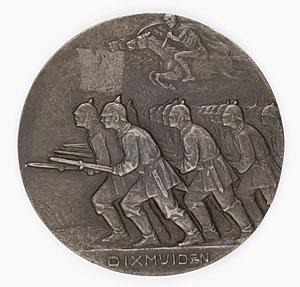
Unknown
Dixmuiden: withstand the raging of the storm
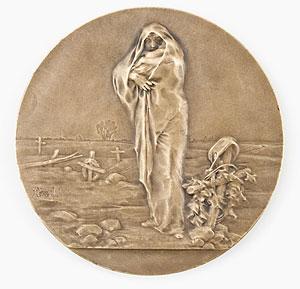
Marcelle Lancelot-Croce
Grieving woman and child at a soldier's grave
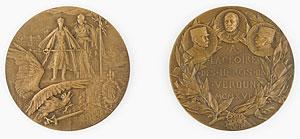
Charles Pillet
Heroes of Verdun
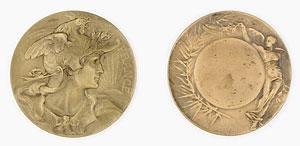
Louis-Alexandre Bottee; Adolphe Rivet
Unnamed prize-winners medallion

Marcel Dammann
Burial of the unknown French soldier
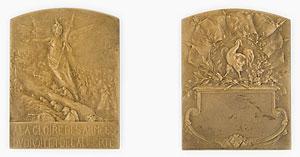
Julien Prosper Legastelois
To the glory of the armies of right and liberty
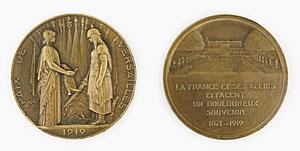
Raoul Benard
Versailles peace treaty, 1919
The Australian sculptor Dora Ohlfsen designed this medallion while she was working in Rome. It was manufactured in England. Ohlfsen returned to Australia in 1920 to promote the sale of the medallion in aid of permanently disabled Australian and New Zealand soldiers. The obverse shows the figure of Australia crowning her dead son with laurel.
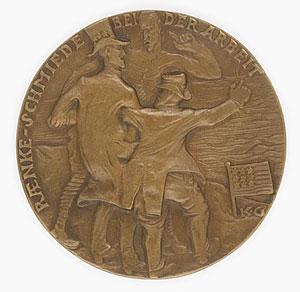
Karl Goetz
John Bull (England) tries to presuade a reluctant Uncle Sam (United States) to cross the Atlantic and join the war
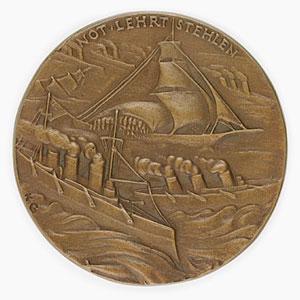
Karl Goetz
U-Boat blockade

Karl Goetz
England's honourable flag: U-41
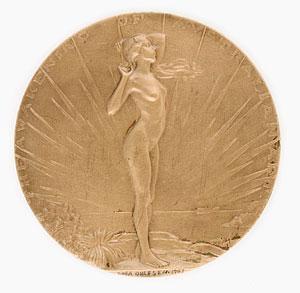
Dora Ohlfsen
The awakening of Australian Art
![I shall strike the stars [reverse]](/sites/default/files/styles/main_content/public/95006/image/relawm148851.jpg?itok=epGrqUOq)
Marcel Dammann
I shall strike the stars [reverse]

